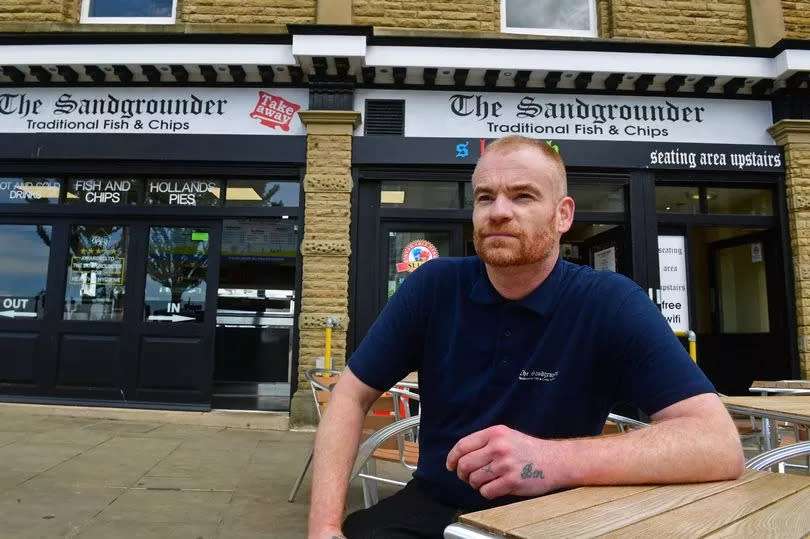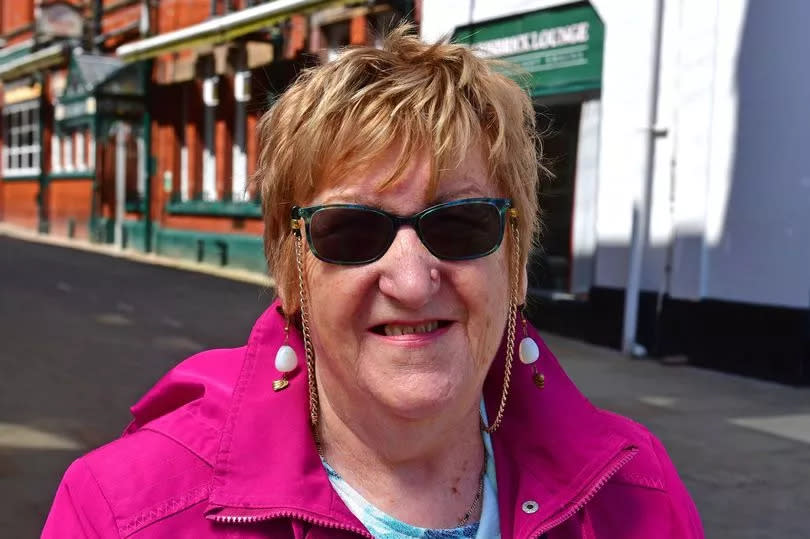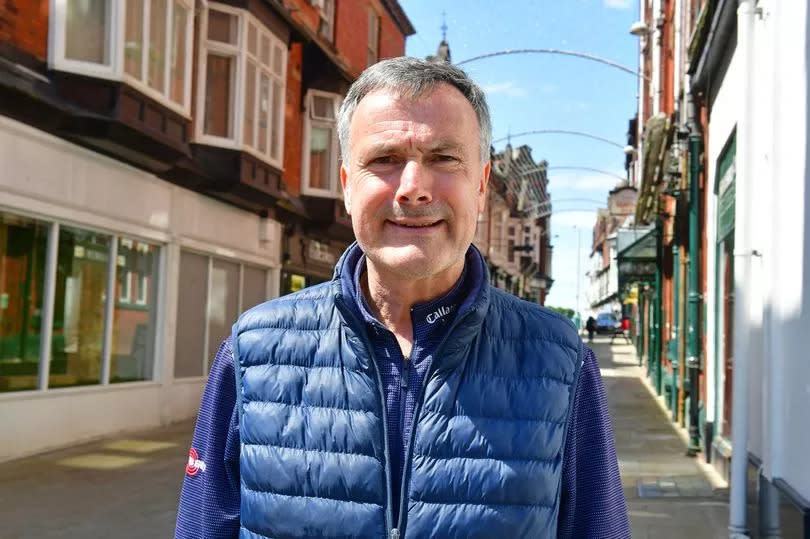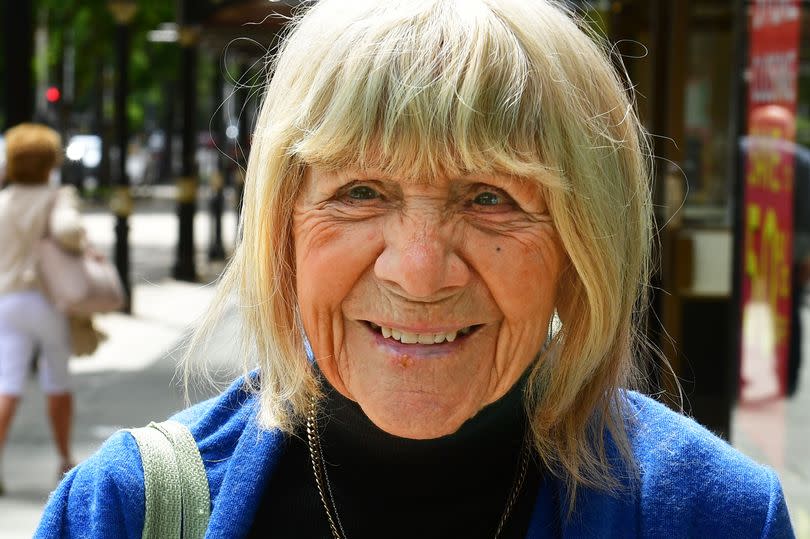People are running out of hope in Merseyside's 'three hour town'

In the 1960s, Jean Forshaw worked in the Scarisbrick Hotel in the town centre of Southport - and she loved it.
“I worked in the cocktail bar,” says Jean, “it was absolutely brilliant, we had Americans coming in asking for Harvey Wallbangers. I didn't know what they were to be honest.”
Her nostalgic smile turns to a grimace as she adds: “But look at it now, it is so dilapidated.”
Jean, now 79, points to the crumbling façade of the once grand hotel, which was bought out of administration by Britannia Hotels in 2011. Last year the company retained its status as the UK’s worst hotel chain for an impressive 11th year in a row.
READ MORE: Get the latest updates on the General Election to your WhatsApp
Sean Byrne is another Southport local with fond memories of the Scarisbrick.
“This place used to be a gold mine,” says the 62-year-old former teacher. “It was a fantastic place to come for weddings, for meals out. It was the jewel in the crown of this town.
“But now I think it is symptomatic of the decline of Southport.”
For Jean and Sean, the story of the Scarisbrick is sadly the story of Southport. A once grand and glitzy destination that welcomed throngs of locals and tourists alike, but that has been left to wither away to become a shell of its former self.
“There has been a big deterioration in the upkeep of the town, look at the parks and the cemeteries - absolutely awful,” explains Sean, who has lived in Southport his entire life.

“I know the local council struggles for funds, but I think you can trace the decline of the town back to when Southport ceased to be its own borough and became part of Sefton. They have a different remit and are managing all sorts of situations. I am not sure that maintaining a Victorian seaside resort is their forte.”
Based within the historic county of Lancashire, Southport was founded in 1792 when innkeeper William Sutton built a bathing house at the now southern end of Lord Street.
At the turn of the 19th century, Southport started to become a popular tourist destination thanks to its proximity to the newly constructed Leeds and Liverpool canal and the attractions like its pier and the high class shops of Lord Street. As the century progressed, so did Southport’s reputation as an elegant seaside resort.
Lord Street’s glamour even attracted a young Louis-Napoléon Bonaparte - the future Napoléon lll and nephew of the all-conquering emperor - to lodge in the town centre for a short while in the mid 19-th century. It is suggested the area was the inspiration for a number of the tree-lined boulevards found in Paris today, including the Champs-Élysées.
Fast-forward to 1972 and with the prospect of Southport losing its county borough status and potentially becoming a non-metropolitan borough within Lancashire, the town lobbied to instead be part of the newly formed Sefton Council, a borough within the new conurbation of Merseyside.
It is a move that has created tension in the town ever since. In fact, Southport’s current Member of Parliament, Conservative Damien Moore has previously written to ministers to ask for the town to be removed from Merseyside altogether.
There are those both in and out of Southport who perhaps feel the town has never quite felt part of Merseyside. One reason for this could be the political differences it has had compared with its conurbation neighbours. While Merseyside has become the strongest of Labour strongholds, the town by the sea has never once been held by the party of the red rosette.
“Southport is fascinating,” explains Stuart Wilks-Heeg, a professor of politics at the University of Liverpool, who lives just down the coast in Crosby.
“Southport has been a constituency since 1885. It has changed hands 11 times since then, but that has always been between the Conservatives and the Liberals or Liberal Democrats.
“This time it looks like Labour are probably going to win it. That would be the last Merseyside seat that Labour needs to have the full set in the region.”
A YouGov poll has predicted that the general election on July 4 will see Labour's candidate Patrick Hurley win more than 50% of the vote in Southport, with Conservative Mr Moore - who has held the seat since 2017 - way back on under 30%.
The Lib Dems - who hung on to the constituency for twenty straight years before Mr Moore’s first victory, are projected to finish fourth, behind Reform UK.

“The Lib Dems have clung on here in local elections,” explains Professor Wilks-Heeg, “But across the whole of Merseyside, we have just seen the Labour vote going up and up. Labour got complete control of Liverpool and then that pushed out to areas that naturally should never have been Labour. This is now pushing out to Southport.”
So political change may be coming to Southport - but there are plenty of other changes that the people who live and work here want to see regardless of what colour rosette their representative is wearing.
A look along the once-great Lord Street provides a grim vision of a fading retail offer. Shop windows that were once such a draw are now adorned with brightly coloured posters advertising closing down sales.
The Wayfarers Arcade, one of the most authentic and elegant Victorian shopping arcades in the north of England today represents something of a ghost town.
Moira Clayton is standing outside the soon-to-close Beales department store, feeling disconsolate.
“Everybody is disappointed to see the big shops like Beales closing. It feels like there is nothing for people to come to Southport for anymore”, explains the 85-year-old.
“I used to come here with my kids in a pram, it was fabulous. But the area has changed, it has gone downhill with all the shops closing.”
Moira says she is ready for a political change and would favour Labour both locally and nationally.
“I used to vote for the Tories but I never will again,” she adds. “What have they done for us? This place has gone to the dogs.”
Jean Forshaw is another who is ready for a change, but that doesn’t mean she is necessarily enthusiastic about what could follow.
“My husband wouldn’t vote Conservative and we couldn’t vote Labour before because there was no Labour in Southport, so we voted Lib Dem,” she explains.
“I don’t like What Rishi Sunak is doing, he isn’t getting us anywhere. We need change, but what is the change? I haven’t got any trust in politicians”
Sean Byrne is another Southport local who is ready for something different.
“I think it is time for a political change, not just locally, but nationally,” he says, adding: “What has been going on is just a disgrace.”
A former Lib Dem voter, he remains undecided of whether to back Labour this time around, adding that he has "a lot to think about" in the remaining weeks before July 4.
If the closing shops of Lord Street make for a grimly fitting representation of a town in decline, then the current state of Southport’s famous Pier is an even more powerful one.
The Grade II listed structure, the second longest pier in the country, has been closed since December 2022 over what Sefton Council describes as “serious health and safety fears.”
The costs of the repair job could balloon as high as £13 million and no reopening date has been given as yet. For those relying on the dwindling tourism offer of this town, this is another bitter and potentially existential blow.

“The loss of the pier is massive,” explains Andrew Wynn, manager of the Sandgrounder fish and chip shop, based on the nearby Nevill Street.,
“It has hit us massively, especially around the winter months, it was always a big draw. People would come here especially for the pier, obviously they aren’t coming anymore.”
“The truth is, there is just not enough to keep people in Southport all day,” adds Andrew. “I call it the three-hour town. That is how long people get when they pay for parking. You watch them come in, park up and then leave three hours later.”
Next door at the Joke Shop, John Bury is not in a laughing mood.
“Why would anyone come to Southport?” he says. “All the decent shops are gone, Lord Street is largely empty, the arcades are empty. It used to be a far nicer place.”
“Look outside,” he says, gesturing out of his shop window to the empty streets beyond. “It is a nice day in June, one might reasonably expect it to be busy.”
It is clear that whoever becomes this famous town’s next Member of Parliament after the general election on July 4, there is a big job to be done.
The people that make Southport tick - its business owners, its residents and those who come to visit this once glamourous seaside resort, appear to have lost faith that it can reclaim what made it such a vibrant destination in years gone by.
For Andrew Wynn in the Sandgrounder chippy, hope for the future is in short supply.
“I think political parties are out for what they can get," he explains. "They can promise the world and then never match it - but I guess you have to have hope.
“It feels like this place is just going to turn to dust and everyone will forget about us.”
The Liverpool Daily Post newsletter delves into the biggest stories on Merseyside

 Yahoo News
Yahoo News 
